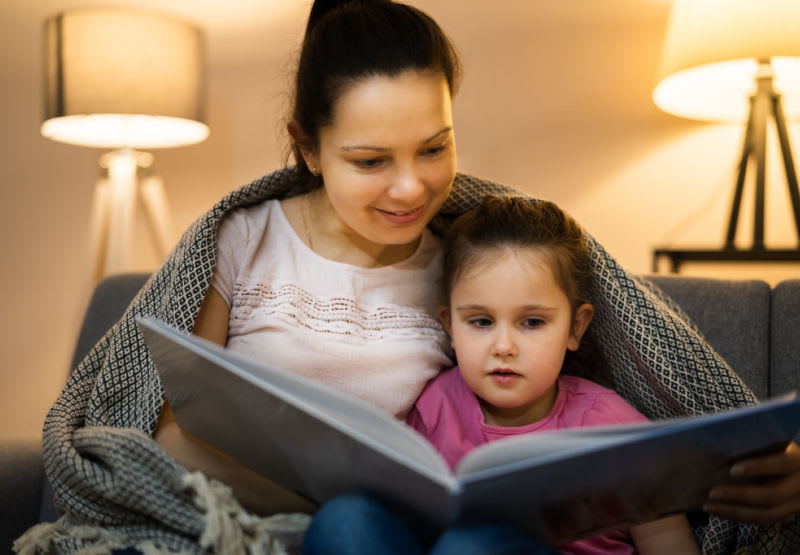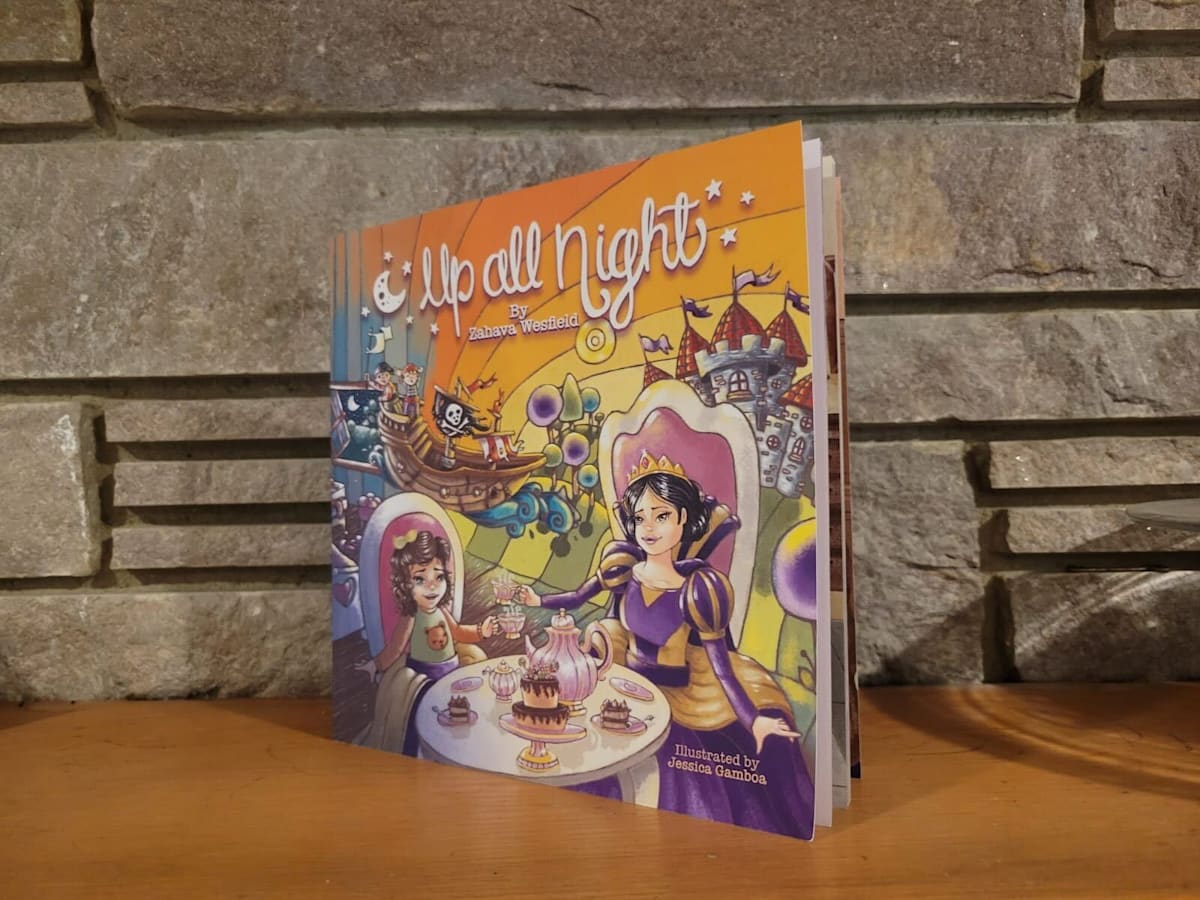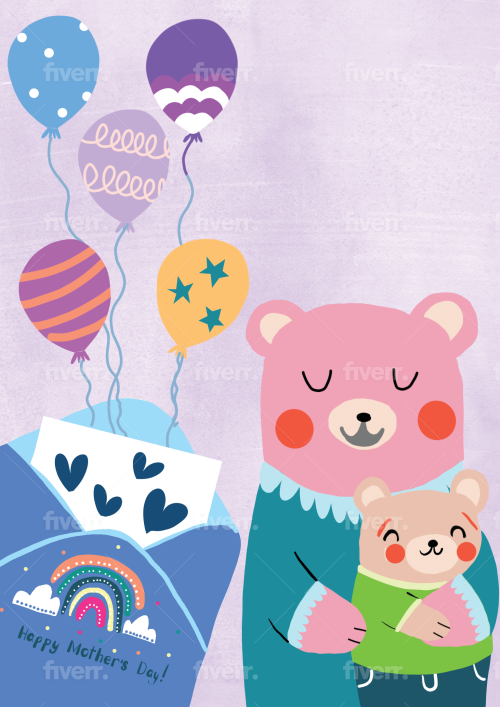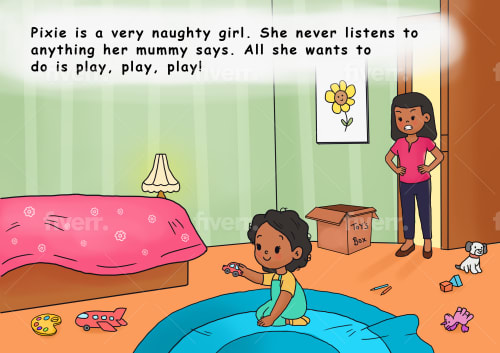How to Write a Timeless Children's Book From Start to Finish
The following article will inspire and guide you in your journey to write a successful and timeless children's book.
 September 23, 2023
September 23, 2023 12 minute reading
12 minute reading
Do you want to write for children? If you do, congratulations on taking the first step. Writing for children is more challenging than most people think. Children’s literature is one of the most difficult to write and publish, but it’s also the most rewarding.
When you write kids’ books, you are in a unique position to impact the young minds of the next generation and become a force for good. Writing for children involves engaging a very imaginative audience and competing in a highly competitive book genre.
In the US, the market size in 2022 for children’s books is $2.6 billion, and it’s expected to grow by over 2% yearly. There’s lots of room for self-published authors in this niche rather than only traditional publishing, and this post will guide you in determining the best children’s book ideas to jumpstart your career.
Find a professional children's book writer on Fiverr
Before we dive in, check out "Up All Night" by Zahava Wesfield, a magical children's book illustrated and formatted by Fiverr Freelancers.

Before we dive in, check out "Up All Night" by Zahava Wesfield, a magical children's book illustrated and formatted by Fiverr Freelancers.
Write you book todayWhere to Find Children's Book Ideas?
Coming up with ideas for great children's books can take time and effort. You want to write something that kids will love, but you also want to avoid rehashing the same old stories that have been told a million times. Where can you turn for some inspiration? Here are four great places to find ideas for your next children's book.
Your Own Childhood Experiences
One of the best places to start when looking for ideas for a children's story is your own childhood. Think back to the things that you loved when you were a kid. What were your favorite books? What kind of things did you like to do? What did you wish someone would have written a good children’s book about? Drawing on your own experiences is a great way to develop fresh, new ideas.
Your Kids or Grandkids
If you don't have any kids of your own, borrow your neighbor's! Just kidding. But seriously, spending time with kids can be a great way to develop ideas for books. Pay attention to the things they say and the things they do. What are their interests? What captures their imagination? Use these insights to develop an idea for a book that will resonate with them.
The News or a Popular Culture Reference
Another great source of inspiration is current events or popular culture references. Is there something in the news that's captured everyone's attention? Is there a hot new movie or TV show that everyone is talking about? Use these as jumping-off points for developing an original idea for a children's book.
For example, if there's a lot of talk about climate change, you could write a book about a family of polar bears who must leave home because the ice is melting. If there's a popular new toy that everyone is talking about, you could write a story about a child who goes on an adventure with that toy. There are endless possibilities when you let your creativity run wild.
Your Local Library or Bookstore
Last but not least, remember good old-fashioned research. Head to your local library or bookstore and browse the shelves. See what kinds of books are out there in the book market and get an idea of what's popular with kids these days. This can help spark some ideas for stories that you can write that will appeal to young readers.

"Up All Night" was illustrated by Jessica.G , a freelance illustrator on Fiverr. Check out her gigs and get a quote from her for your project.
Contact JessicaExamples of Children’s Book Ideas
It can be challenging to develop ideas for a book that will capture a child's imagination and be something parents will want to buy for their kids or read aloud. Here’s a list of children’s book ideas to inspire you.
A day in the life of a [insert occupation]. This could be a firefighter, police officer, doctor, teacher, chef, or anyone else kids are interested in. Give them a behind-the-scenes look at these people’s day-to-day life so kids can learn more about what they do. Children are always fascinated by the grownup world, and telling stories about who they can be when they grow up inspires them to dream and develop their passions.
A book about feelings. This is a great way to help kids understand and identify their emotions. Use colorful illustrations
and simple text to discuss different emotions and how to deal with them. The movie Inside Out is an excellent example of how children can be taught about various emotions and how to process them in a healthy matter through age-appropriate media.
A book about animals. Kids love animals, so this is always a popular topic. You could focus on a specific animal or do an overview of different animals from all around the world. Include fun facts and photos to make it even more engaging, or use different animals as the heroes of your stories. Don’t be afraid to experiment and break stereotypes.
A book about nature. Help kids explore the outdoors with this type of book. Talk about the different seasons, weather, plants, and animals that live in your backyard or local park. This is a great way to get kids interested in science and nature.
A counting and numbers book or an alphabet book. Numbers books are great for helping kids learn their numbers and start counting. Use everyday objects or items that interest children so they can easily follow along and count with the book. An ABC book is perfect for helping kids learn their letters and the sounds they make. Use images and words that start with each letter of the alphabet so children can see how the letters are used in everyday life. These books are the basic foundations of learning, and making them engaging can spark the love of reading and knowledge in kids.
A book with imagined characters. Children are very imaginative, so you can always create fictional characters from scratch. Just ensure they are understandable and relatable to children so the idea will stick. Famous children’s authors like JK Rowling and CS Lewis were masters at creating imaginary worlds that resonated well with children.
Choose your own ending book. Letting children choose the ending of their stories is a great way to engage them and keep them coming back for more. This popular trend in the 1980s continues to sell to this day.

A children's book animals illustration made by Annie W, an Illustrator on Fiverr.
Choose the Type of Book according to age groups
Before pursuing a children’s book idea, you need to determine the age group for which you’ll be writing. Books written for kids aged 0-18 are often classified as children’s books. This includes YA novels that provide a transition to adult literature. The wide age range opens itself to a diverse set of ideas you can explore.
Specific themes are proven to work well for children depending on their age, and these timeless children’s book ideas will inspire you to write your next masterpiece.
For Kids Ages 0-6: Picture Books
Picture books rely on illustrations and a small word count to tell a story. A short story like this is 500 words or less and can even be less like board books for babies and toddlers. However, these books must tell a compelling story to be successful and appeal to the target age group with tactics like rhyming. Children’s book publishing for this age group requires aspiring authors to work with children’s book illustrators.
Famous examples are The Very Hungry Caterpillar by Eric Carle (sold 41 million copies since 1969), Goodnight Moon by Margaret Wise Brown (sold 48 million copies since 1947), and The Cat in the Hat by Dr. Seuss.
For Kids Ages 6-7: Early Reader Fiction
Kids in this age range are ready to tackle longer blocks of text ranging from 2,000 to 5,000 words. Pictures are still necessary to break down the text. Children’s book authors usually write series in this niche to help kids build their reading skills.
Examples include Matt de la Peña’s award-winning Last Stop on Market Street and Carmela’s Full of Wishes, and Shel Silverstein’s Where the Sidewalk Ends, The Giving Tree, and A Light in the Attic.
For Kids Age 7-9: Chapter Books
By this age, child readers can now read books that are 5,000 to 10,000 words long. The book is divided into chapters, and sketches instead of full-color illustrations are used.
Famous examples include Diary of a Wimpy Kid by Jeff Kinney and The Boxcar Children by Gertrude Chandler Warner.
For Kids Ages 9-12: Middle-Grade Books
These books are more advanced in story structure and prose. Word count can be around 30,000 to 50,000 words, and illustrations are sparsely used except as chapter headings.
JK Rowling’s early Harry Potter books fall under this category. Other classic examples are Charlie and the Chocolate Factory by Roald Dahl and Percy Jackson and the Olympians by Rick Riordan.
For Kids Ages 12-18: Young Adult Books
More commonly referred to as YA novels, these books are the same length as adult novels at 50,000 to 100,000 words, but they appeal to older children. The subject matters are different, though. YA novels talk about adolescent topics like navigating life-changing situations.
Famous examples include The Fault in our Stars by John Green, The Hunger Games series by Suzanne Collins and the Divergent series by Veronica Roth.
What Are Some Of The Success Factors for a Winning Children's Book?
Have you ever wondered why some types of children's books become household names while others languish on store shelves? It's not always easy to tell why one book catches on while the other doesn't. However, certain factors can increase the chances of success for a children's book. When coming up with children’s book ideas, keep these template elements below in mind to increase the chances of your book writing success.
A Memorable Character
A memorable main character is one of the most important elements of a successful children's book. Think about some of the most popular children's books of all time, maybe the first children’s book that you read. Chances are, the protagonists of those books are characters that readers can't forget and undergo great character development. They're quirky, they're lovable, and they're relatable. As an author, it's essential to create a main character that kids will want to follow through the pages of your book.

A cute children book illustration made by highborwseer
A cute children book illustration made by highborwseer
An Engaging Storyline
In addition to a memorable main character, a successful children's book also needs an engaging storyline. Kids have short attention spans, so it's important to keep them hooked from beginning to end. To do this, ensure your story is fast-paced and filled with action and suspense. Consider if you want to write in past or present tense, and if you want to write the point of view in first person perspective or third person perspective. As the story progresses, you should also introduce new challenges and obstacles for your protagonist. This keeps readers engaged and rooting for your character until the end.
Illustrations that Pop
If a picture is worth a thousand words, illustrations must be worth even more—especially in a children's book. After all, kids are visual learners. They're more likely to engage with stories that feature bright, colorful illustrations that capture their attention. The book cover design must also thoughtfully reflect the contents of your book. When choosing an illustrator for your book, select someone with experience creating visuals that complement the text and bring the story to life.
Educational Value
Nowadays, parents are looking for books to teach their kids something new to help them grow and learn. If you can weave educational themes into your story without sacrificing entertainment value, you'll surely attract parents’ and educators’ attention. But beware: too much educational content can make your book feel didactic or preachy. The key is to strike a balance between education and entertainment. Nonfiction books are a good genre to tackle educational topics.
Family-Friendly Themes
Last but not least, successful children's books typically contain themes that resonate with families. Whether it's the importance of being kind or the challenges of navigating sibling relationships, kids (and their parents) can relate to themes like these on a personal level. When selecting themes for your book, try to choose topics that will resonate with kids and adults—topics that everyone in the family can enjoy together.
What’s Next for your children's book?
Now that you find it easier to choose a topic for your children’s book, it’s time to look at the step-by-step of your journey:
Write the first draft of your book
Revise and edit your work, you can contact a content specialist to proofread and edit for you
Bring you book to life with awesome children’s illustrations
Consider self-editing or hire a professional editor
Hire a professional Beta reader and make sure your book is ready to be published
Design a book cover that both children and parents would love.
Write an awesome book blurb that will help you sell your book to parents
Publish your book on Amazon and other online retailers
on social media and other marketing channels.
Wrapping Up
Book writers are faced with many obstacles—but publishing a successful children’s book is possible. If you're looking for a way to share your message with the world and make an impact on young minds, writing a children's book is the perfect way to do it. Remember to keep your target audience in mind and ensure your story is engaging and enjoyable for kids. And don’t forget—it takes a lot of hard work and dedication to write a successful children’s book, but the payoff can be gratifying.
Find a professional children's book writer on Fiverr
Are you ready to take on this challenge? Check out self-publishing services to find the perfect freelancer to help create your children’s book.


